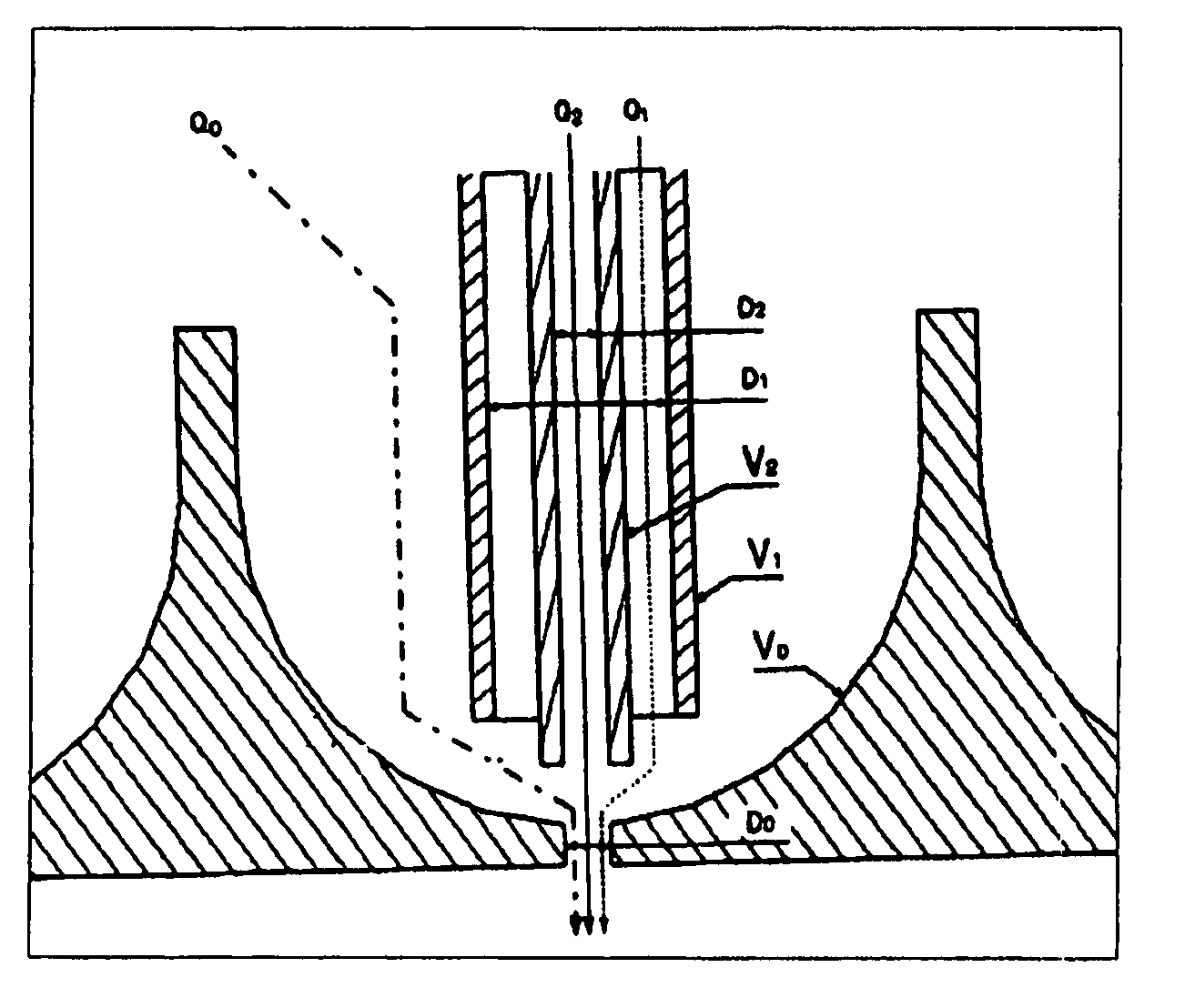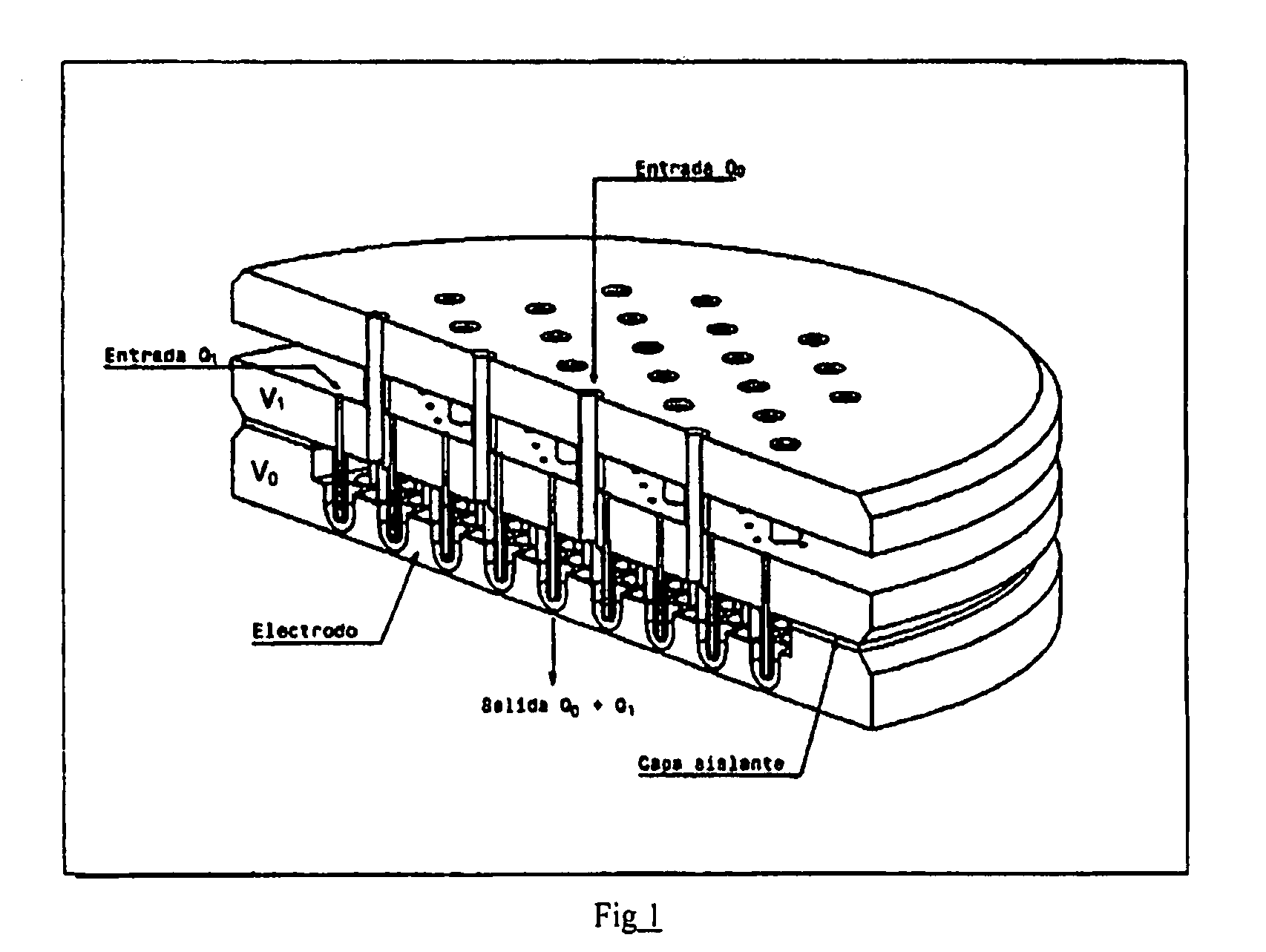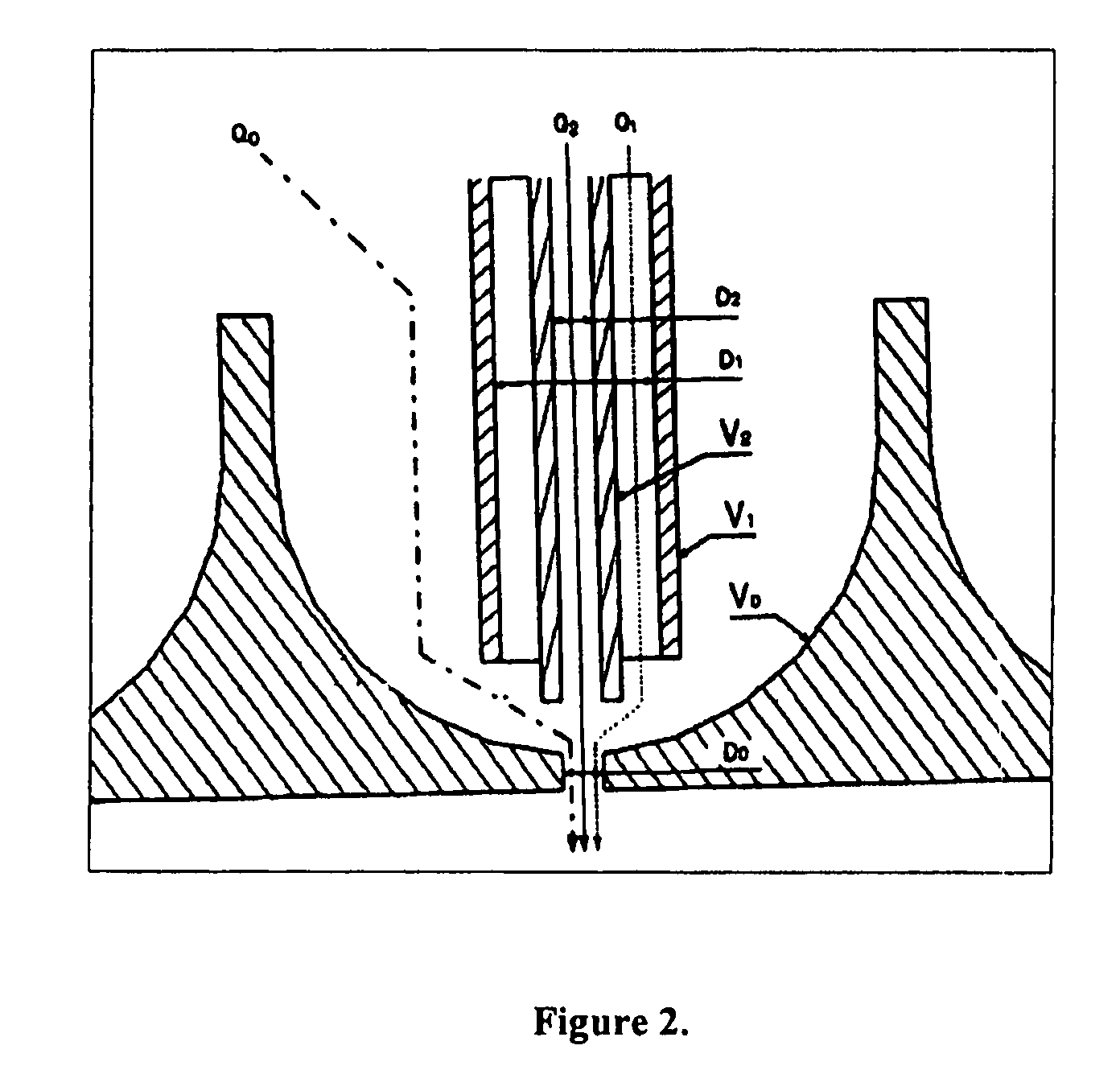Device for the production of capillary jets and micro-and nanometric particles
a micro- and nano-metric particle and capillary jet technology, which is applied in the direction of machines/engines, lighting and heating apparatuses, combustion types, etc., can solve the problems of limiting the packaging density of needles in the design, the electric field at their tips also decreases accordingly, and the design cannot meet the requirements of the condition, so as to increase the suction or drag effect, increase the mechanical stiffness, and increase the effect of drag
- Summary
- Abstract
- Description
- Claims
- Application Information
AI Technical Summary
Benefits of technology
Problems solved by technology
Method used
Image
Examples
Embodiment Construction
[0045]In what follows, an embodiment example is described for the present invention; it does not attempt to be exhaustive nor to limit the scope of the present invention; it is only disclosed as an illustration, while the actual protection field of the invention is to be construed from the claims.
[0046]As shown in FIGS. 1 and 2, a device with 55 cells has been built, having a single feed tube per cell and thus transporting a single fluid; the material chosen was stainless steel AISI 316L. In order to shape the prototype, a PC-controlled CNC machining center has been used (EMCO PC Mill 155) as well as a precision lathe Pinacho. The electrode was fastened to the body of the device, which was built in AISI 316L stainless steel, with the help of six polyamide screws (Nylon) and a 0.1 mm thick Silicon RTV film, from Lockseal, meant to isolate the electrode from the body where the capillary tubes or feed tubes are set. The feed tubing is made in silica (Polymicro, USA) having an inner dia...
PUM
| Property | Measurement | Unit |
|---|---|---|
| size | aaaaa | aaaaa |
| size | aaaaa | aaaaa |
| size | aaaaa | aaaaa |
Abstract
Description
Claims
Application Information
 Login to View More
Login to View More - R&D
- Intellectual Property
- Life Sciences
- Materials
- Tech Scout
- Unparalleled Data Quality
- Higher Quality Content
- 60% Fewer Hallucinations
Browse by: Latest US Patents, China's latest patents, Technical Efficacy Thesaurus, Application Domain, Technology Topic, Popular Technical Reports.
© 2025 PatSnap. All rights reserved.Legal|Privacy policy|Modern Slavery Act Transparency Statement|Sitemap|About US| Contact US: help@patsnap.com



